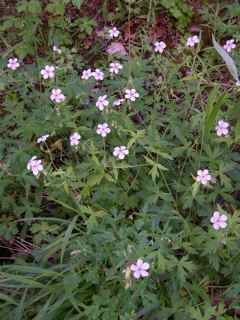|
|
 Plant - summer West Fork of Oak CreekMax Licher @http://swbiodiversity.org, Usage Rights: Creative Commons Attribution-ShareAlike (CC BY-SA) | | | | | |
|
Origin:
Native
Life Cycle:
Perennial
General Desc:
Sprawling perennial with white to pale pink 5-petaled flowers to 1 inch wide, palmately lobed leaves up to 6 inches wide and a seed capsule shaped like a cranesbill.
Identification notes: Perennial with forked stems, swollen nodes, erect, not highly branched; leaves palmately lobed, sometimes sparsely hairy, divisions incised, toothed to lobed; flowers whitish, may be pale pink, not deep purple as found in G. caespitosum.
Height:
Sprawling to 3 feet
Habitat Description: Moist soil of ponderosa pine and mixed conifer forests.
Plant Communities:
Montane Conifer Forest
Elevation: 6500 - 11500 feet
Color:
White to pale pink
Shape:
Regular not in clusters
Tubular:
N
Flowering Period:
Apr - Oct
Description:
Flowers are up to 1 inch wide, white to pale pink, 5-petaled with purplish veins at the ends of branched stems. Stamens 10, 5 of them longer than the others.
Leaf Color:
Dark green
Leaf Type:
Simple
Leaf Shape:
Palmate
Leaf Margin:
Lobed
Leaf Attachment:
Basal and opposite
Leaves Clasp:
N
Hairs:
Stems
Spines:
N
Leaf Description:
Leaves are 1-1/2 to 6 inches wide, palmately lobed into 5 to 7 main segments on long stalks, most near the base of the plant. Leaf divisions are incised, toothed to lobed.
Fruit Color: Brown
Fruit Type: Capsule
Fruit Notes: "Cranesbill" refers to its long, beak-like seed capsule that becomes recoiled when mature.
Seed Notes: 1 to 2 coarsely pitted seeds per capsule.
|
|